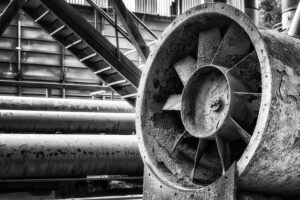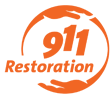 There is no single home damage drying method that experts can rely on now. They have evolved immensely over the past years. The traditional method of letting everything dry in the sun or using hand fans and air circulation has now been replaced with heavy-duty machines. Experts use these machines to dry out carpeting, floors, drywall, and more.
There is no single home damage drying method that experts can rely on now. They have evolved immensely over the past years. The traditional method of letting everything dry in the sun or using hand fans and air circulation has now been replaced with heavy-duty machines. Experts use these machines to dry out carpeting, floors, drywall, and more.
Home restoration services through the US employ a range of different drying methods, each looking to accomplish something new. The very common method used for drying slightly soaked homes involves large fans and open windows that everyone knows about. Still, with the advancement in technology, professionals are relying on several other techniques now.
Let’s look closely at some of these alternatives to get an idea of how experts get it done.
Different Home Damage Drying Methods
Wall Cavity Drying
Before they suffer any secondary damage, use this efficient home damage drying method. It involves drilling holes in walls and placing an air blower in front of these holes. There are specialized fans that blow air to a fixed place. With these fans, you can ensure maximum airflow through the holes and reduce your electricity bill while doing it.
It begins by drilling a few holes at one end of the wall. Experts also drill some holes at the other end of the wall.
These holes allow the air to escape with the moisture and any mold spores within the wall. Drill holes so that the escaping air and moisture don’t damage any other walls, and the spores can escape.
It may take a few hours to a day for the wall to dry from the inside. This step is important as it prevents mold from developing and eating your walls from the inside out elsewhere.
Hardwood Floor Drying – Rescue Mat System
This home damage drying method is for indoor hardwood floors. It rescues them from damage even if water has seeped inside, involving a ‘mat’ attached to a suction motor. When you lay it on top of a damaged wooden floor, it creates a vacuum that pulls all the water vapors within the wooden surface – even water that has seeped deep into the wood – leaving behind a dry floor.
This solution is ideal for hardwood floors at risk of water damage because of flooding, sewage overflow, etc. You might have to place the mat on the same spot several times to ensure no water vapors are left; this is primarily because of the limited capacity of a mat.
There are some bigger mats as well, but they can cost a small fortune. Hence, experts first dry out the floor with some other technique and then use the mats.
Low-Grain Refrigerant (LGR) Dehumidification
This home damage drying method expertly combines technological advancement with commercial or home restoration services. LGR Dehumidification works much like a dehumidifier since it extracts water vapors from the atmosphere. However, instead of the regular ones you see at the supermarket, experts use more powerful ones here.
The goal is to extract water vapor not just from the atmosphere but also from walls and floors. That is why these dehumidifiers have a two-coil system in place compared to the single coil traditional dehumidifiers have.
These high-powered dehumidifiers collect water via diffusion and then cool them down, collecting the water in much less time. Once all water vapor has is extracted from the air, it starts drying the walls and floors. Using these is a simple matter of turning them on and leaving them to work for a few minutes to hours, depending upon the damage.
However, we wouldn’t recommend using this home damage drying method if the water damage in the walls and floor are too extensive. Normally, experts use this technique after recovering any extensive damage. The goal is to stop mold growth by drying up the atmosphere as much as possible, rendering the spores useless.
After dehumidification, we recommend that people with sensitive noses avoid sleeping in the room for at least a day. We sanitize and deodorize the place right after drying to ensure no bacteria from the water or bad odor are left, either by mold, damaged wood, or drywall. Once the drying process is complete, you are free to resume your life as it was.
Wrapping Up
The world of home restoration services is ever-evolving, each new bit of technology designed to ensure that you get mold and damage-free homes quickly and at lower costs. Each home damage drying method has its own merits and demerits, and what you need will vary based on the type and extent of water damage you faced.
If you’d like to learn more about these technologies or are facing an emergency anywhere in the US, give us a call! 911 Restoration uses the latest home restoration technologies to get you the results you desire as quickly and cost-effectively as possible. Whether it’s water damage, fire, mold, or any other type of damage, we’d love to help you out!

